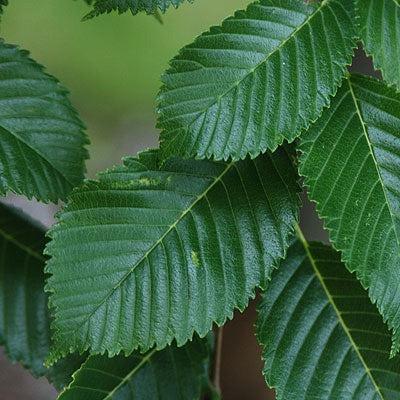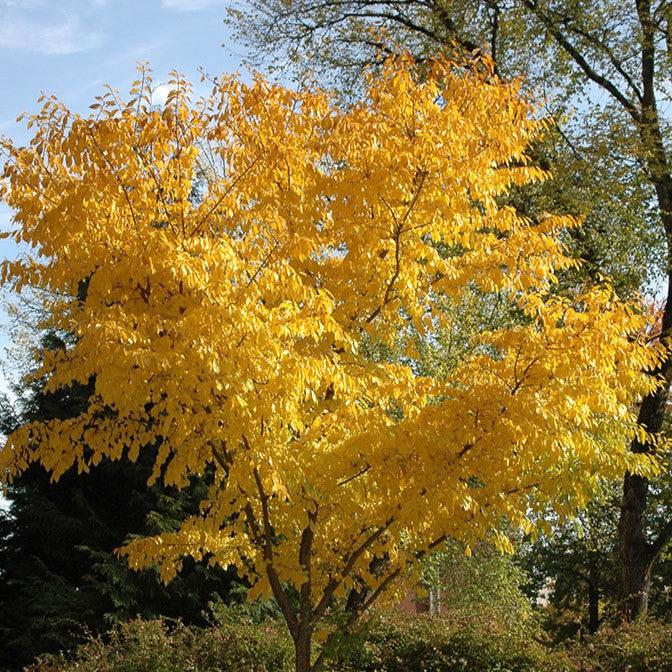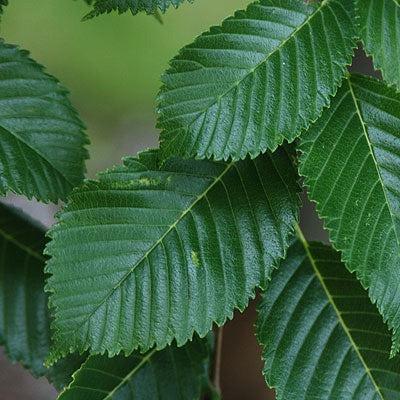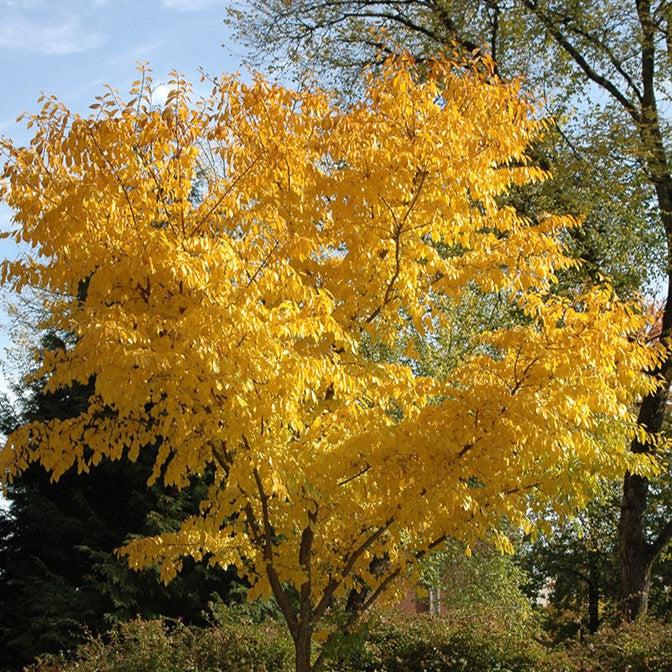Japanese Elm is a hardy deciduous tree with a broad spreading crown resembling an umbrella and branches that can develop corky wings as it matures. The rough dark green leaves with double-serrated margins turn yellow in fall. Inconspicuous red-green flowers bloom in early spring before the foliage emerges and give way to samaras. Grows best with full sun and rich well-drained soils. Japanese Elm is highly resistance to Dutch Elm disease. Can tolerate both dry and wet sites
|
Type: |
|
|
Origins: |
East Asia |
|
Height: |
30’ - 50’ |
|
Spread: |
25’ - 35’ |
|
Spacing: |
30’ |
|
USDA Hardiness Zone: |
3 - 9 |
|
Culture: |
|
|
Bloom Color: |
Green |
|
Season of Interest: |
MAINTENANCE NEEDS: Low Maintenance. Elms are susceptible to phloem necrosis and wetwood. Other potential issues include wilts, rots, canker, leaf spots as well as pests such as miners, borers, and scale.
LANDSCAPE USES: Accents or Group Plantings, Borders, Woodland Gardens, Rock Gardens, Ponds and Streams, and Shade Tree.
COMPANION PLANTS: Eastern Redbud, Dogwood, Musclewood
IMAGES: 禁樹なずな, Japanese Elm at Oyafuru, CC BY-SA 4.0, (2) Tom elm, Ulmus davidiana var. japonica. Inverleith Park, Edinburgh (1), CC BY-SA 4.0, (3) pakku, 帯広保存樹木 - panoramio, CC BY 3.0, (4) Dalgial, Ulmus davidiana var. japonica samara at winter, CC BY-SA 3.0, (5) Tom elm, Ulmus davidiana var. japonica. Coronation Walk, The Meadows, Edinburgh (1), CC BY-SA 4.0
*As plants have ranges in appearance they may not appear as the images shown.



























































